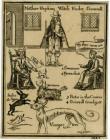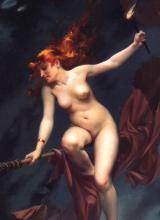I’m scared of the face,
I’m scared of the eyes,
I’m scared of the blackness,
And the wrinkles, and the lines.
I’m scared of the demons,
Trapped in the trees,
Ghouls in the branches,
Heathen and hungry thieves.
I will hide away,
I will hide away,
Behind the door, beneath the pillow,
I will hide away.
I’m scared of the questions,
And the marks upon my skin,
I’m scared of all this purity,
And the rattling of the wind.
I will hide away,
I will hide away,
Lift up the floorboards, board up the windows,
I will hide away.
It’s the bird at my window.
It’s the tapping on my pane,
It’s the holy and their laughter,
And what’s missing in their laughs.
If you’re with me, then you’re broken,
You’re abandoned, you’re lost
But I do love you,
If you do, love me too.
I’m scared of the eyes,
I’m scared of the blackness,
And the wrinkles, and the lines.
I’m scared of the demons,
Trapped in the trees,
Ghouls in the branches,
Heathen and hungry thieves.
I will hide away,
I will hide away,
Behind the door, beneath the pillow,
I will hide away.
I’m scared of the questions,
And the marks upon my skin,
I’m scared of all this purity,
And the rattling of the wind.
I will hide away,
I will hide away,
Lift up the floorboards, board up the windows,
I will hide away.
It’s the bird at my window.
It’s the tapping on my pane,
It’s the holy and their laughter,
And what’s missing in their laughs.
If you’re with me, then you’re broken,
You’re abandoned, you’re lost
But I do love you,
If you do, love me too.
Contributed by Dead End - 2013/1/15 - 16:37
×
![]()
Note for non-Italian users: Sorry, though the interface of this website is translated into English, most commentaries and biographies are in Italian and/or in other languages like French, German, Spanish, Russian etc.









Parole di Darren Hayman
Musica di Darren Hayman, insieme a “The Long Parliament”, il gruppo di musicisti che l’accompagnano in questo concept album.
Album “The Violence”
The Violence is a 20-song, double LP chronicling the 17th century Essex Witch Trials during the English Civil Wars.
Between 1644 and 1646, approximately 300 women were executed for witchcraft in the eastern counties of Essex, Suffolk and Norfolk.
The album deals with fear and isolation, the way we use our own terror in times of trouble to lash out at the weak. It’s about how societies persecute otherness and outsiders.
The Violence “it’s about how violence frightens us and how fear just leads to greater violence,” says Hayman.
‘The Violence’ è un concept album di 20 canzoni che raccontano i processi per stregoneria che si tennero nell’Essex inglese nel 17° secolo, durante il periodo delle guerre civili.
Tra il 1644 ed il 1646, nelle contee dell’Essex, del Suffolk e del Norfolk, circa 300 donne furono giustiziate come streghe.
I temi dell’album sono la paura e l’isolamento sociale, il modo in cui nelle epoche di particolare difficoltà gli essere umani usano il terrore sopraffacendo ed eliminando i più deboli tra di loro, perseguitando quelli che appaiono diversi, i marginali, gli estranei/stranieri alle loro comunità.
“Con ‘The Violence’ – dice Darren Hayman – ho voluto spiegare come la violenza ci terrorizzi e come la paura indotta porti soltanto ad una violenza ancora maggiore”
Poco si sa di lui prima della sua auto-investitura a “Witch-Finder General” …
Sappiamo però che questo giovane uomo di poco più di 20 anni (anche se viene sempre raffigurato come più anziano) fu il responsabile della morte di almeno 300 donne, giustiziate come streghe tra il 1644 ed il 1646.
I metodi di “indagine” di Hopkins erano in parte assai moderni, molto simili a quelli recentemente utilizzati dagli USA a Guantanamo ed Abu Ghraib... La tortura non era legale nell’Inghilterra del 600 ma il nostro Hopkins si inventò la deprivazione del sonno, un metodo che si rivelò estremamente efficace per estorcere confessioni alle vittime, tutte donne povere e ignoranti, giovani e sole, oppure vecchie ed invalide, marginali ed emarginate dalle loro comunità. Una di loro, tal Rebecca West, per scampare alla tortura e aver salva la vita, non esitò a denunciare amiche e congiunte, financo la madre e la sorella, che vennero poi impiccate…
Altri metodi erano invece assai più arcaici e a sfondo religioso, come l’ordalìa dell’acqua, dove la sventurata, ben legata, veniva gettata in acqua: siccome l’acqua è segno del battesimo e le streghe la aborriscono, se la poveretta affondava era innocente ma se galleggiava… O come la ricerca di segni visibili o invisibili del “marchio del demonio”: tali erano inequivocabilmente considerati, per esempio, malformazioni come la politelìa (presenza di capezzoli accessori) o la polimastìa (mammella sovrannumeraria) perché è da lì che si credeva la strega allattasse gli emissari del demonio, individuati quasi sempre in poveri animali domestici, soprattutto gatti e cani.
In solo un paio d’anni di attività Matthew Hopkins trovò più streghe che nei 100 precedenti. In pochi gli si opposero, tra questi il religioso puritano John Gaule, che manifestò anche per iscritto scettismo ed opposizione all’azione del Witch-Finder General.
Per fortuna Matthew Hopkins morì nel 1647, ufficialmente di tubercolosi, ma secondo alcune fonti fu lui stesso sospettato e indagato per stregoneria o quanto meno per falsa testimonianza. La leggenda vuole che fece la fine delle sue vittime.
Purtroppo però Hopkins fece scuola ed i suoi metodi furono ancora usati nel famoso caso di stregoneria a Salem, Massachusetts, del 1692-93.
E’ vero che a partire dal 18° secolo la caccia alle streghe fu soltanto più sporadica ma bisogna ricordare che proprio nell’Essex, a Sible Hedingham, nel 1863, un vecchio sordo muto conosciuto come Dummy (non si conoscono le sue vere generalità) fu torturato ed ucciso da una folla inferocita aizzata contro di lui da due compaesani che lo avevano accusato di essere uno stregone, lui che per sbarcare il lunario s’improvvisava indovino. I suoi accusatori vennero poi condannati per falsa testimonianza alla terribile pena di… sei mesi di galera!
Questa l’introduzione che il suo autore fa del brano:
“A bird tapping at a window was often seen as an omen of death. Where can you hide when you see evil everywhere?”
Un uccello che va a sbattere contro la finestra un tempo era interpretato come un segno di morte… Tempi violenti, imperversavano la guerra civile ed i suoi demoni armati… Tempi bui, imperversava il puritanesimo e la sua demonizzazione di ogni miseria umana…Non c’è un posto dove nascondersi quando ci sono demoni dappertutto.
L’elenco delle canzoni dall’album. Le più significative verranno progressivamente inserite.
1. The Violence
2. Impossible Times
3. How Long Have You Been Frightened For?
4. We Are Not Evil
5. The She-Cavaliers
6. Elizabeth Clarke
7. Vinegar Tom
8. Parliament Joan
9. The Word and the Word Alone
10 I Will Hide Away
11. When the King Enjoys His Own Again
12. Henrietta Maria
13. A Dogge Called Boye
14. Outsiders
15. Arthur Wilson’s Reverie
16. Rebecca West
17. Desire Lines
18. Kill the King
19. A Coffin for King Charles, a Crown for Cromwell and a Pit for the People
20. The Laughing Tree